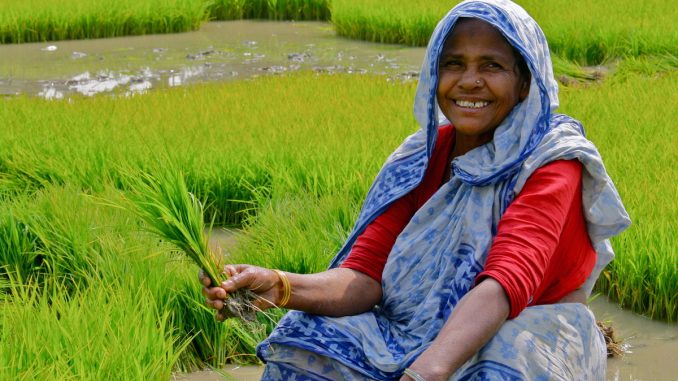
Indian farmers are breaking world records by growing copious amounts of organic rice and other staple foods without the help of GMOs – debunking the myth that genetically modified organisms are the only way to end world hunger.
Farmers in India’s poorest state of Bihar are putting Monsanto’s billion-dollar herbicides to shame by producing some of their biggest yields ever – a staggering 22.4 tonnes of rice on just one hectare of land.

BYPASS THE CENSORS
Sign up to get unfiltered news delivered straight to your inbox.
You can unsubscribe any time. By subscribing you agree to our Terms of Use
Latest Video
Undergroundreporter.org reports:
The crop yields being realized by Indian farmers are simply phenomenal and have been achieved by employing age-old, yet simple, growing techniques like using farmyard manure and forgoing herbicides.
Farmers in India are beating long-held records with these organic growing techniques, too. One Chinese agricultural scientist, Yuan Longping, previously grew 19.4 tonnes of rice, but Indian farmers still out performed him with their 22.4-tonne yield. Even World Bank-funded scientists at the Philippines based International Rice Research Institute’s record has been broken, along with all multi-national companies’ genetically modified seed crops in both the U.S. and Europe.
Sumant Kumar and many of his friends in neighboring villages in Bihar, known as India’s poorest state, had to prove their astonishing results to University experts, who accused them of cheating the system.
Kumar’s success is due to SRI, an approach to crop development which evolved in France in the 1960s to deal with seed scarcity. The SRI system (System of Rice Intensification) aims to produce more from less — and so it has. Kumar put the following elements into practice to get rice grains so large, they shocked local agriculturalists and experts:
- Seedlings were transplanted at a young age, in single seeds, instead of clumps.
- Wider spacing of plants was implemented, using a square pattern.
- The soil used was moist, but not flooded, as in traditional rice farming.
- Only organic fertilizers are used.
- Rotary weeding is practiced.
These techniques allow farmers to plant more on less acreage and gain higher yields, all without resorting to over-priced, royalty-driven GM seeds or the use of herbicides like glyphosate-based RoundUp.
The SRI technique also drastically reduces farmers’ dependency on outside, industrial inputs, while also allowing them to adapt to their local climates and specific agricultural challenges.
Kumar’s success isn’t a one-time wonder, either, or limited to a single farmer. His friends in Darveshpura village have all recorded over 17 tonnes of rice, and many others in the villages around have doubled their usual yields in recent years.
With record-breaking yields Kumar and his peers are breaking cycles of poverty, dependence upon biotech companies, and providing organic, healthy food for thousands.
Inspired by Kumar’s success, the Nobel prize-winning economist Joseph Stiglitz has visited the Nalanda district and recognized the potential of this method of organic farming, telling the villagers they were “better than scientists.”
I’d add, “very much better than biotech scientists,” who have sold the world a lie that, “you can’t feed the masses without Monsanto’s, patented seed, and best-selling chemicals.”
Kumar just proved that the world can feed itself very well, thank you — organically.


